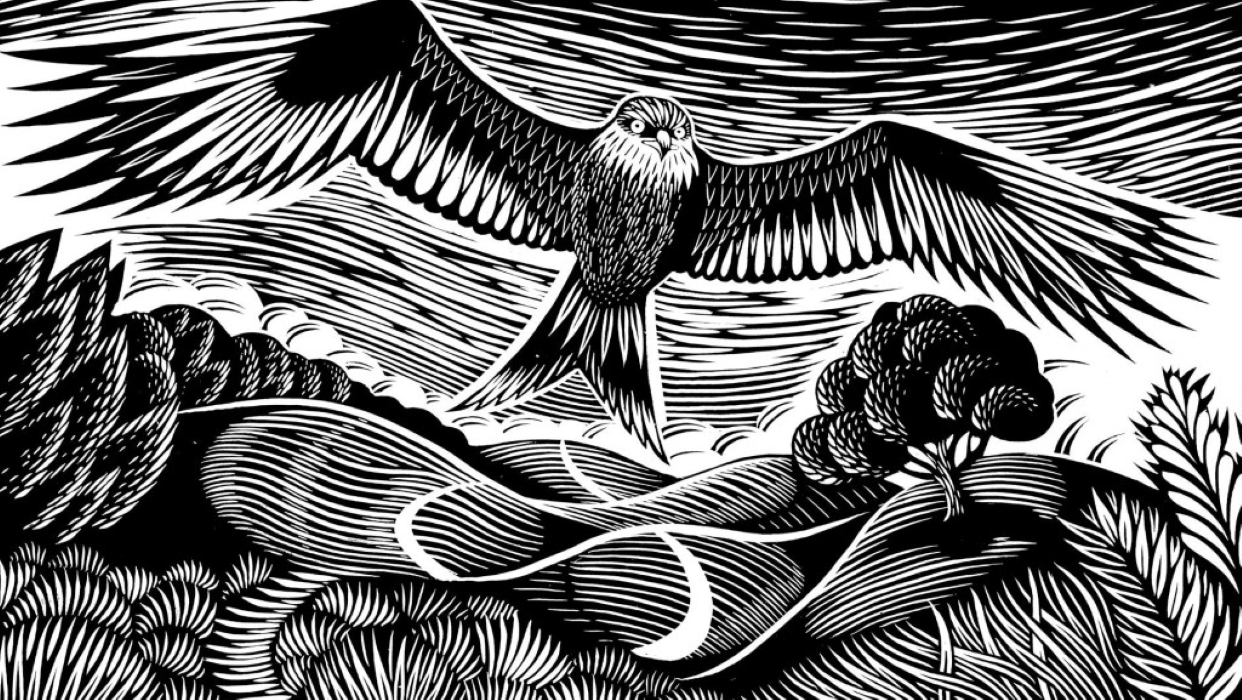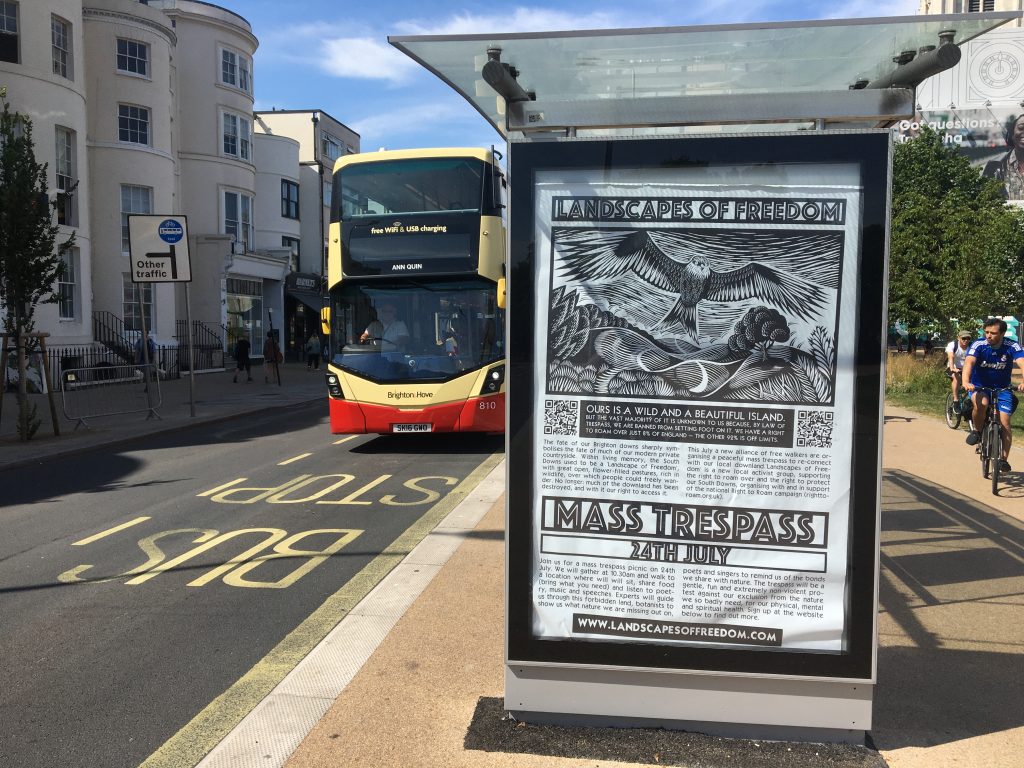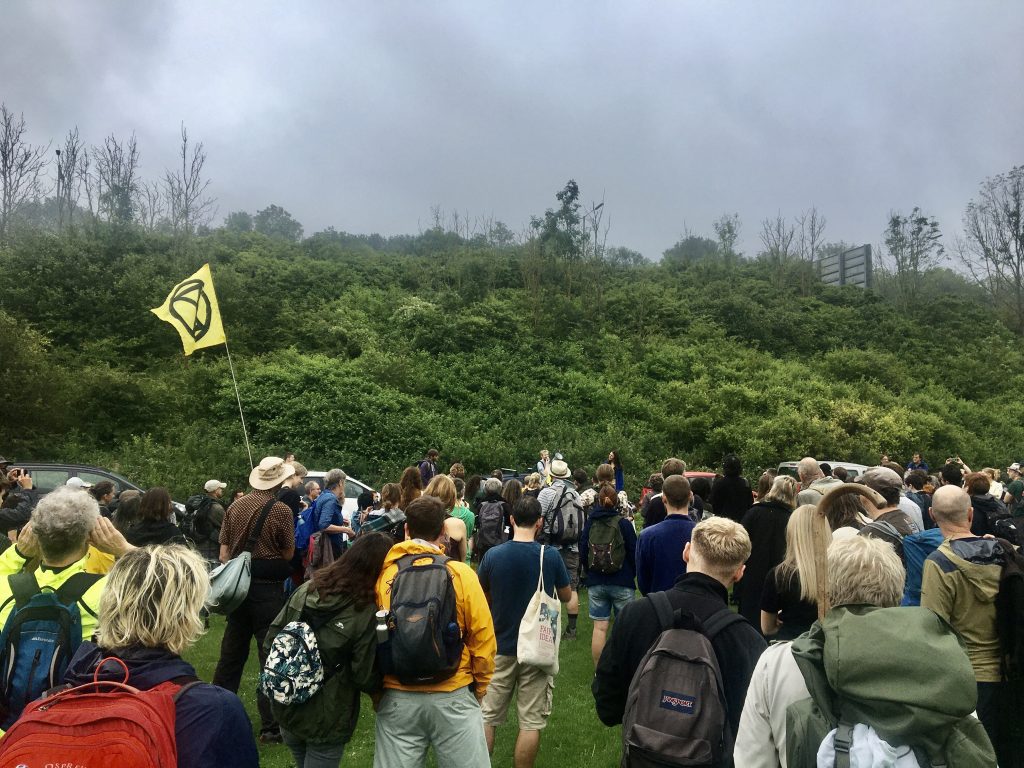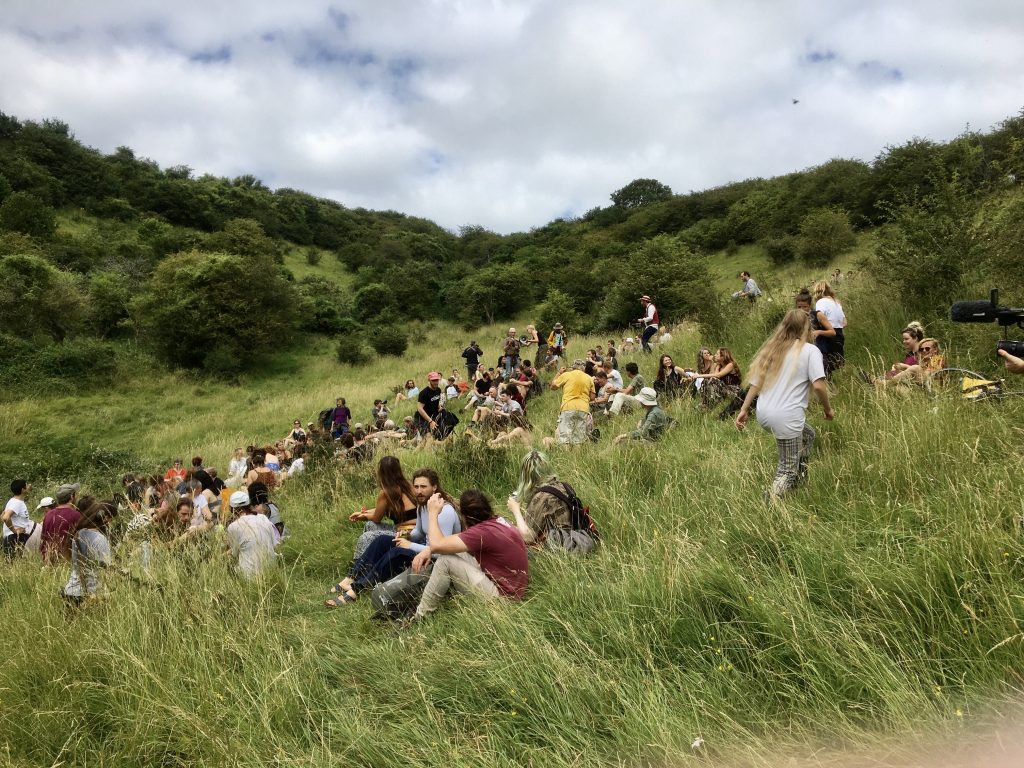
Illustration by Nick Hayes for Landscapes of Freedom
This post was written by Ian Scoones and first appeared on Zimbabweland
Access to land is not only a concern in places like Zimbabwe. In England, less than 1% of the population own half the land and 92% of land is out of bounds for ordinary people. The skewed nature of land ownership and access is what Guy Shrubsole, author of the excellent book ‘Who owns England?’ calls England’s best kept secret. Lack of transparency over who owns what is compounded by a land registry that is impossible to navigate. Detailed research reveals that much of England is owned by a mix of rich families, large corporations, the military, the church, the crown and local governments. This huge enclosure is excluding the majority and preventing the emergence of more sustainable, inclusive ways of using the land. Sound familiar?
This is why a land reform movement is again stirring in England. This last weekend I joined a ‘mass trespass’ near Brighton, organised under the banner ‘landscapes of freedom’. Light drizzle turned to sunshine and 300 odd people set off to the Downs as part of a movement for ‘free walking’ challenging the enclosure of land, a tradition that the ramblers’ associations pioneered long ago. In this case it was not even private property, but council land rented out to tenant farmers, but removed from use by Brighton city residents just a kilometre or two from the city.

As the brilliant local ecologist, historian and campaigner, Dave Bangs explained at the trespass event, the South Downs in southern England are a valuable habitat, a site of important biodiversity of chalk grassland species, which are maintained by grazing especially by sheep. The Downs are situated in a densely populated area with huge demands for recreational use. In part protected by ‘national park’ status, the valuable habitats are under threat.
Since the Neolithic times, land in the South Downs has shifted between grazing and arable farming and settlement pendulum like as economic fortunes change and property rights shift. The loss of unimproved grazing since the removal of sheep grazing and shepherds through the great enclosures of the seventeenth and eighteenth century has been dramatic. An agricultural depression in the nineteenth century made matters worse and since the end of the Second World War the intensification of farming, fuelled by subsidies, has meant that patches of downland have declined further. Where slopes cannot be farmed, valuable habitats remain, but these are only maintained if farmers still grazing, otherwise scrub encroaches and the areas are lost.

A major review of the council’s Downland estate is underway, with all sorts of views as to what should be done. But access for people is an important demand and the ‘trespass’ was a demonstration of the importance of the countryside, even for a largely urban population. The COVID-19 lockdowns have only made this more vital. Unlike the large estates, owned by a single family or corporation, the over 10,000 acres of downland near Brighton are owned by the Council, as are many areas across England, yet are rented out to farmers on tenancies. Over years, the ploughing up of downland or the use of inappropriate crops and chemicals has continued unabated.
As a lived landscape, farming must always be part of these areas, but what sort of farming, by whom? Can sheep return and downland habitats be restored? Can tenancies involve more smallholding to supply high value products for the city? Can rights to roam be required for open grazing areas to reverse the tide of enclosure? Will access become more inclusive – can the countryside be for everyone (as Kelly Smith of Black Girls Hike explained at the trespass, land access is of course both a race and class issue)? Will new measures under the UK’s regressive Police Bill further limit the ability of Romany people and other nomads and travellers to make use of the countryside, criminalising their ways of life? These are the rural development questions being debated in southern England, but are relevant to so many places, where skewed land distribution, unequal access to land, limits on mobile livelihoods and a long history of agricultural policy that does not encompass issues of sustainability and multiple use dominate.

The mass trespass in Brighton was all very genteel. This was no ‘jambanja’ land occupation, where economic marginalisation and desperation for new land-based livelihoods drove invasions and occupations of private property in Zimbabwe in the early 2000s. There were no ‘base commanders’ or ‘seven member committees’ or stand-offs and violent encounters with farm owners. In Brighton, the tenant farmers came more to watch what was going on rather than to confront, and the police kept their distance. And, after some short speeches, a few poems and a song or two, we all returned to our comfortable, middle-class, urban homes.
Yet despite the peculiar Englishness of it all, the demands for land reform are growing. The excellent investigative work by Guy Shrubsole; the important Labour Party commission on land led by George Monbiot – Land for the Many; the long-running and brilliant magazine, The Land; and even a bestselling book – ‘The Book of Trespass’ – beautifully written and illustrated by Nick Hayes, all point to a shift in perspective on land in England.
The secret has been exposed, people have rediscovered the value of the countryside during the pandemic and the debate has become even more pressing as further restrictive measures are proposed for those who most rely on mobility and access in the countryside. Land rights are an English issue too.
More on UK land issues on this blog can be found in the links below:
